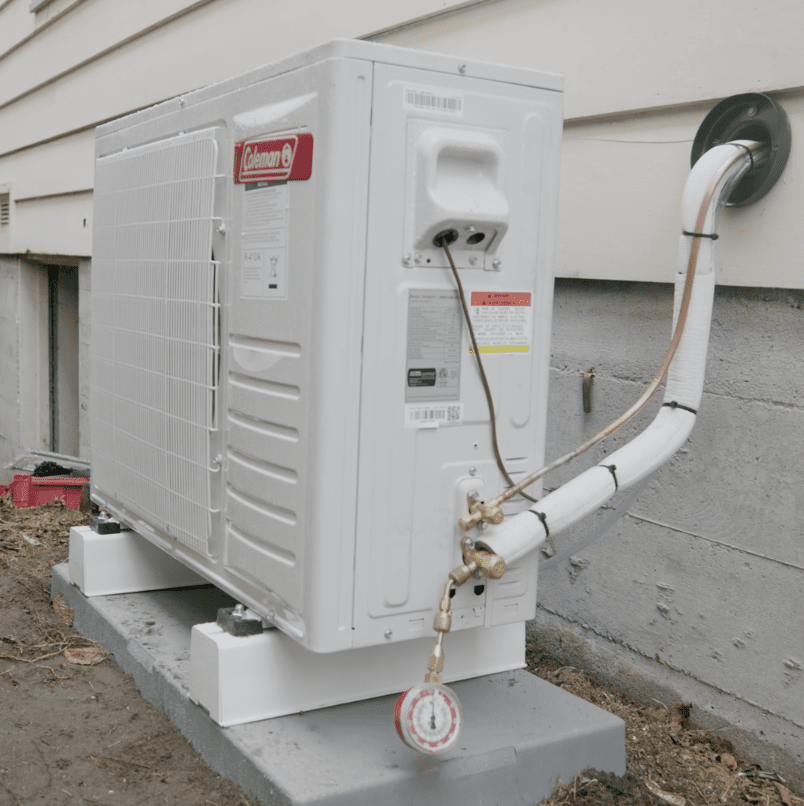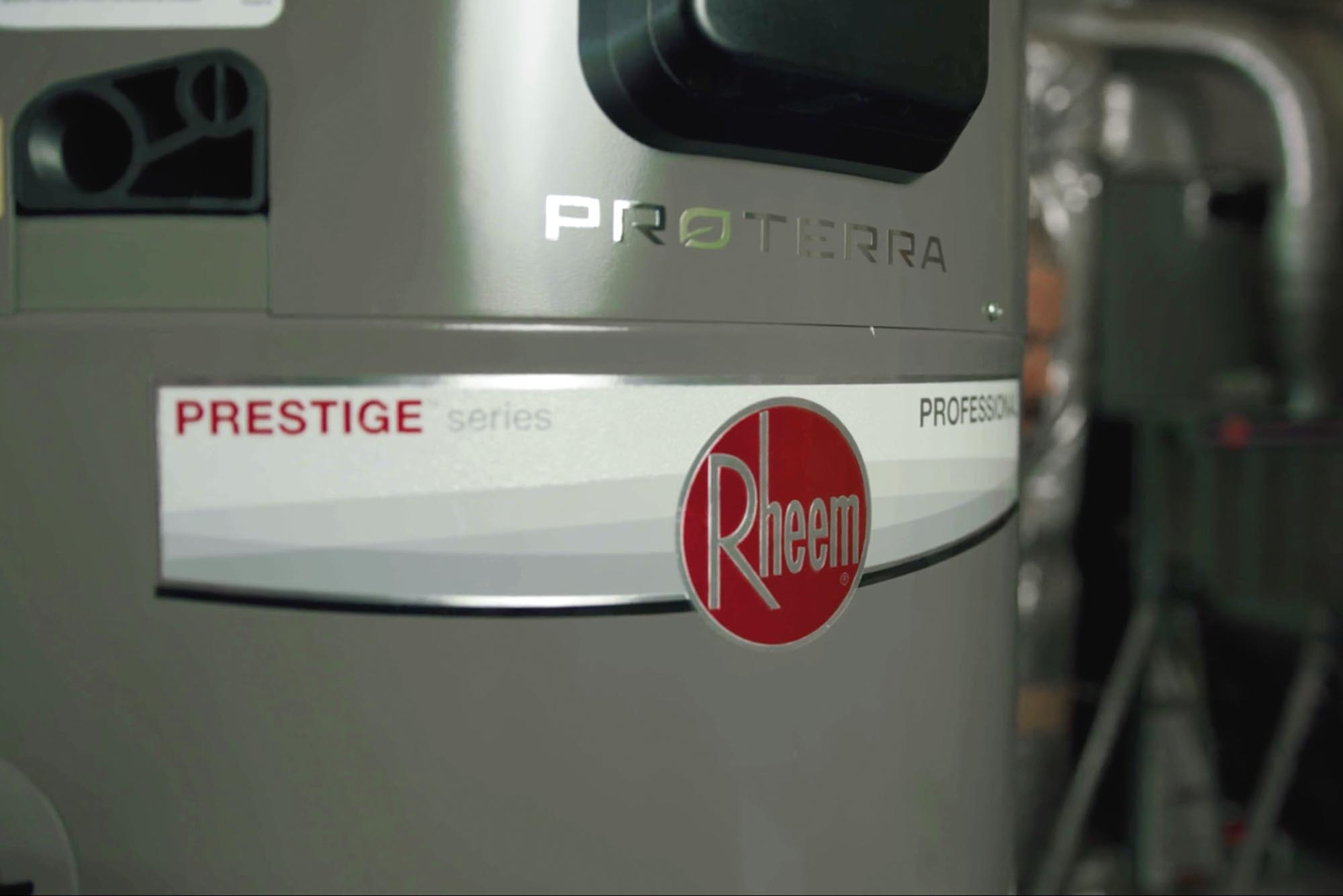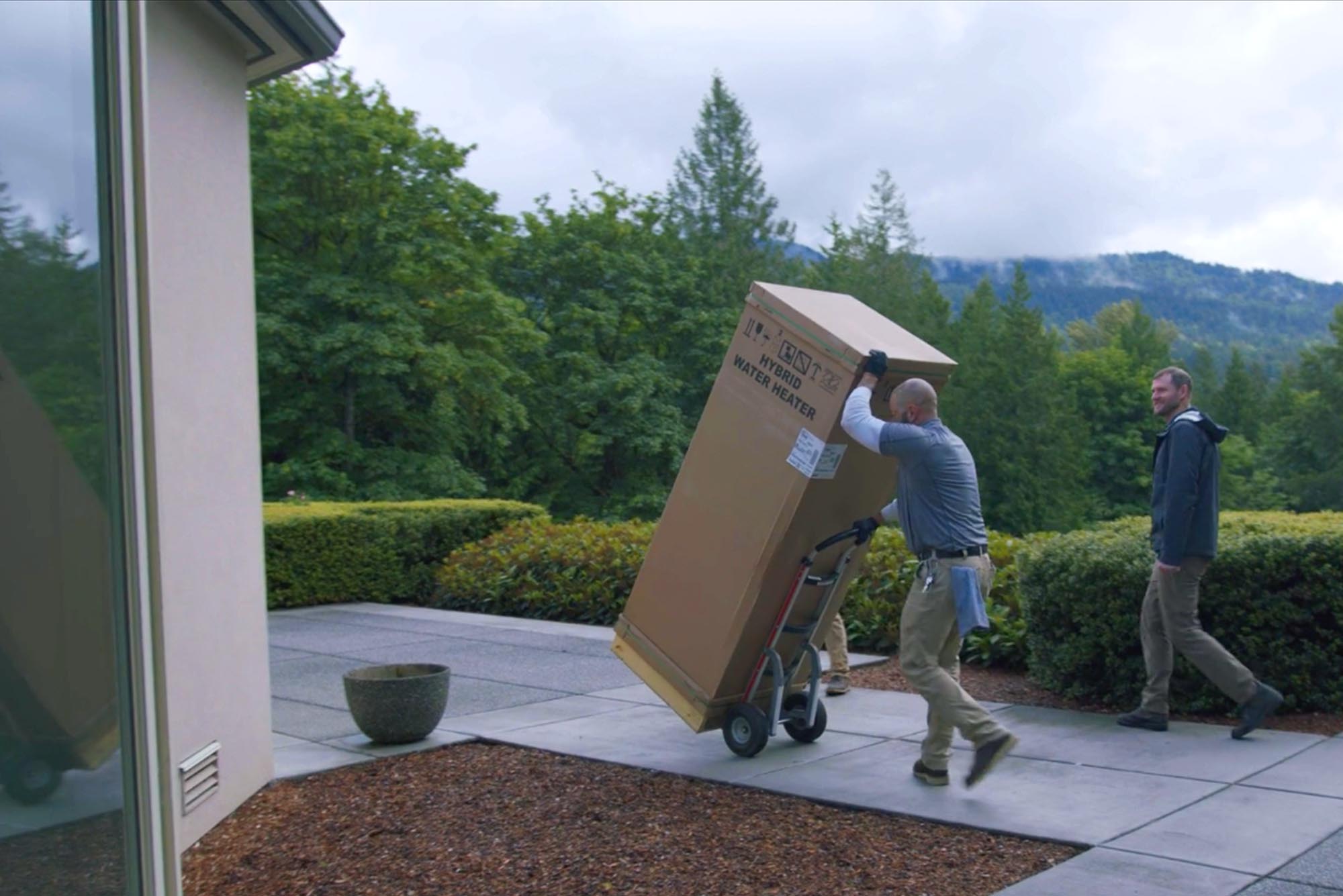Episode Transcript
(HOST)
The city of Issaquah, Washington, outside of Seattle is an outdoor paradise, the nestle in the foothills of the Cascades, it draws adventurers on the ground, and in this sky, this area is also a hub for renewable energy with fast-flowing rivers, and windy valleys nearby… Today, we’re visiting one home that’s making the switch from gas to electric with a hybrid water heater, taking energy from the air and using it to heat the water.
Welcome to Going for Zero. I’m Quinlan Corbet and I’ll be your host as we explore the energy technologies driving the race to get our planet to zero carbon emissions. We’ll meet the everyday people making a difference in this movement and learn what goes into changing a person’s home and their life to save the planet.
Here in the Pacific Northwest, rainy weather is a way of life, so you really want your hot water and heat to be reliable. So today, we’ll be looking at installing a heat pump, water heater that actually pulls energy from the air and uses it to heat the water. It’s pretty amazing technology. Let’s check it out.
We’re here with Steve Phillips from Rheem to talk all things water heater, he’s a humble man, but an expert in his field for sure.
So Steve in the broadest terms, what are we doing here today?
(STEVE PHILLIPS)
Well, today we are taking out a couple of old mid-efficient gas water heaters and installing a new hybrid electric water heater.
(HOST)
So when you say hybrid, what does that mean?
(STEVE PHILLIPS)
So traditional water heater typically has a single source of heat, either you have gas or electric with elements, hybrid uses ambient air temperature to help transfer heat to the water heater itself, so it’s taking the outside air compressing it down through a refrigeration coil that’s wrapped around the steel tank, and that’s where you’re getting the heat transfer.
(HOST)
Why would someone wanna make the switch from a gas heater to a hybrid?
(STEVE PHILLIPS)
Couple of reasons, one of the big ones that motivates a homeowner to do that is just the energy savings you can get. You can start really recouping your money just in the lower energy costs that it takes to operate a hybrid heater over a gas heater, and then two, being environmentally sound, You’re lowering your carbon footprint by switching to a more energy efficient water.
(HOST)
Next up, we are here with Steve Brotton from Great Northwest Installations, and he’s gonna tell us a little bit more about what we’re gonna do today. Hey Steve, you got a minute?
(STEVE BROTTON)
Hey, good morning.
(HOST)
Awesome. Good morning.
(STEVE BROTTON)
How are ya? Great, see you.
(HOST)
Thank you. Well, thanks for coming out today.
(STEVE BROTTON)
No, absolutely. Glad to be here.
(HOST)
Anything people should know about installing this kind of heater or what you’re thinking for your game plan today?
(STEVE BROTTON)
Yeah. Well, it definitely is different. We’re going from gas to electric. Again, it is hybrid, but it still has electricity going through it, we have condensation to be concerned with, again, switching from gas to electric, we’ve already made sure that they have electricity ran to it. That’s super important.
(HOST)
Okay, I’m here. Extra pair of hands and ready to do anything you tell me.
(STEVE BROTTON)
Well, we’ll get started, I’m gonna get in here and get some stuff together and we’ll get er going.
(HOST)
Okay, perfect.
(STEVE BROTTON)
Thank you.
(HOST)
Right, excited to get this guy off the truck.
Okay, so here we are with the existing water heaters. What should homeowners be looking for when they’re thinking about the lifespan of their hot water heaters?
(STEVE BROTTON)
One, obviously, do what the manufacturer says as far as maintenance and upkeep on the water heater to maintain them and keep the life of them.
(HOST)
Right, and this leads to the fact that most replacements are emergency replacements, which is not the ideal scenario for anyone.
(STEVE BROTTON)
That is true, yeah. Most water heaters are kind of a set it and forget it, and just kind of at a site out of mind until you go to that cold shower.
So even though these water heaters are still functioning, they are rather old. If it gets around 10 years or so in age, then you really wanna get somebody and take a look and really consider a proactive approach to doing your water here instead of the cold shower reaction.
(HOST)
That’s what happened in my household.
(STEVE BROTTON)
It’s typical.
Anything that we haul away, we do our best to recycle, so all the metal goes to metal bins, all cardboard goes to the cardboard bins. As much as we can to just do our part along with putting in energy efficiency products. It wouldn’t make sense for us to just take everything we have and put it in a landfill.
(HOST)
That’s awesome.
Cool.
Out with the old, in with the new. While they pull away the old heaters, we’re gonna jump out and check out a wind farm and Eastern Washington that’s helping to clean up the grid.
(HOST)
The Pacific Northwest provides a lot of opportunities for generating clean energy. In this landscape, hydro electricity and geothermal or obvious sources, but wind and solar generation are making an impact too.
Today, we’re meeting with Tyler O’Farrell, the program manager in charge of Puget Sound Energy’s voluntary clean energy programs. Tyler’s going to take us on a tour of the Swauk Valley Ranch, which features five wind turbines that produce 14,000 megawatt hours enough to power 1,300 homes.
(HOST)
So before we head up the hill for a closer look, can you tell me a little bit about PFS programs?
(TYLER)
Yeah, so PSE’s program, we have about 75,000 customers that are currently participating in it right now, so there are about 900 utilities across the country that offer some sort of green pricing program that allows customers to match a portion or all of their electricity with renewable energy located in and around their service area.
(HOST)
It’s eye-opening to know that me, as a consumer, can elect to purchase all my energy from renewable should I choose to.
And in doing that, I can help drive the market, toward making those options more and more available, I didn’t realize that.
(TYLER)
Undoubtedly, they have a huge drive on the demand for more renewable energy that’s being produced in and around Washington especially.
(HOST)
Let’s hop in the car and take a closer look.
(TYLER)
OK, let’s go.
(HOST)
Let’s do it.
(HOST)
So you can opt in to have 100% of your energy come from renewable should you choose.
(TYLER)
Should you choose…Correct, it’s totally voluntary. Again, you supporting just a blend of different resources, and it’s an easy affordable way to make a difference.
(HOST)
That’s so cool. Yeah, okay, so we’re getting a view of some actual turbines here, which is very exciting. So can you tell me a little bit about the actual turbine
(TYLER)
Wind is an incredible resource. We’re out here in Eastern Washington, you could tell probably, but when you got out of your car today that when the wind was blowing. So they’ve got five turbines here that are located on the Swauk Valley Wind Farm. We have PSE willing to not only buy the power, not only we’re buying the renewable energy certificates that are associated with the generation of this project, but then you have the end consumer ready and willing to support projects just like this, this is kind of what it will take to live in that new renewable energy, hopefully, world in the next 10 or 20 years.
(HOST)
We’ve got the new heater unboxed, and I gotta say, I’m pretty psyched, we’re getting it off the palette now, so what are the next steps?
(STEVE BROTTON)
We’re gonna get these bolts off and uncrated from that, and then he’ll roll it off the lot of the pallet in the next steps now it’s just getting measurements and make sure where the earth quick straps are gonna go. We got a bottom board we’re gonna put down for efficiency, he’s gonna finish up the T&P for that, we get the temperature and pressure relief valve to the exterior, the condensate, we talked about earlier, we found a good route for that, so that’s gonna run outside to the exterior of the home as well. Electrical has been taken care of.
(HOST)
Okay, cool.
(STEVE PHILLIPS)
So now that Josh and Steve from Great Northwest installation have wrapped up the install, let’s go over some of the benefits of ProTerra. ProTerra is a great representation of products in our water heating portfolio that embody our greater degree of good sustainability message, which is promoting products like this and educating the tradesmen, so they can install these products for home owners to help them achieve zero carbon emissions.
(HOST)
So now let’s take a look at the costs involved and what the homeowner can expect to save over the lifetime of the unit.
(HOST )
The switch to a hybrid heat pump, water heater, reduced this homeowners CO2 emissions from water heating to just 753 pounds per year and 87% reduction and their water heating costs went down too from $832 to under $100 a year.
Thanks for joining us on Going for Zero, subscribe to the channel and follow us on social media to come along with us, every step of our journey.
Learn More









